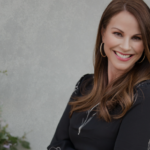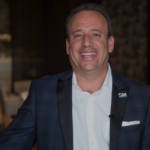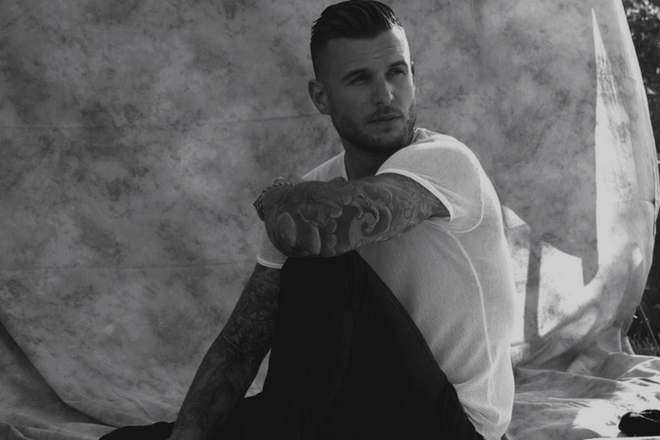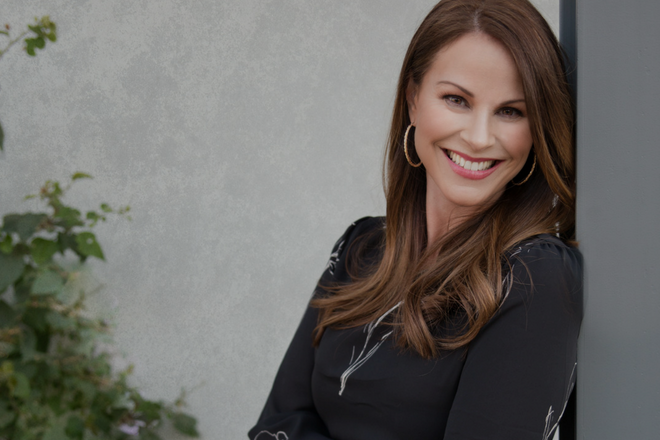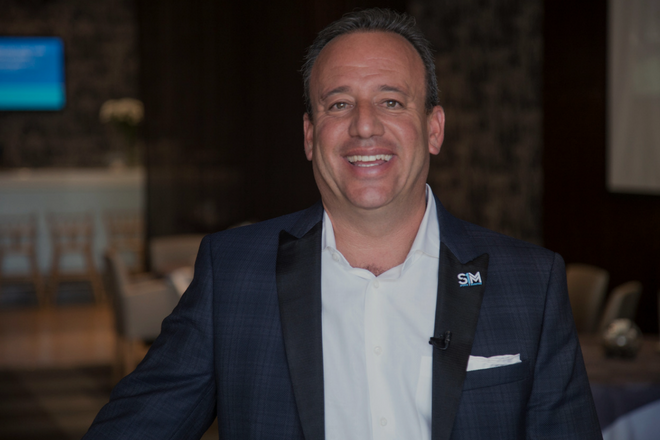“I wasn’t even allowed to take art classes in grade school. They exempted me because I’m color blind, so they just told me I shouldn’t take art classes. I was always kind of pushed out of the design world, so when I did start designing, it came from a very low-fi perspective.”
Shane Vitaly Foran – Founder, CEO & Lead Designer of Vitaly; Taking big risks; Growing pains in business; Handling challenges; Sharing a common vision; the inspiration behind Vitaly designs.
Segment 1: (Length :04:00) – General Updates; Introduction to Shane Vitaly Foran and his journey as an entrepreneur; Starting Vitaly; the early years; Getting investors; Taking big jumps.
Shane’s finer points:
“Yeah, it’s something I noticed recently. I think I kind of always had it in me. It was something that started from a young age. I was never really the best at following rules and doing everything by the book. I actually came across something that I wrote while I was in grade six, and it said in my future I’m just going to design things that I like and then sell them to people. I wrote that in grade six, which is kind of crazy.”
“I did kind of forget about that, and I ended up on a little bit more of a traditional path, and I ended up going to university. I studied politics and kind of found myself doing marketing stuff as well, and I started studying marketing, because I worked for Red Bull for a while.”
Where it all kicked off was my trip when I went backpacking. I think I just realized a passion that I'd forgotten about, through that more traditional path, and I think while I was there and when I got inspired it just helped me change my direction and go back to what I really love and what inspires me.
“Yeah. I think there’s always a series of jumps for any entrepreneur. What you’ve just mentioned, I think there’s kind of a disconnect there. There’s actually a couple big jumps. The first was, I went backpacking. It was a really ridiculous decision to have made. I really didn’t have any money and I shouldn’t have been doing it, I just used what I had left on a student credit line. I’d been working three jobs while in school full-time, so I was able to save a little bit of money to do it.'”
“I just went and I got inspired, came back, brought those products home and happened to have them in my backpack while in a store on Queen Street, which is our popular shopping street here in Toronto. I knew that the owner was in the shop and I just asked her if it was something that she’d ever stock.”
“I really had no intention of starting a brand. I didn’t have the first clue how to work. I didn’t even know what wholesale was. She asked to buy them off me on the spot, and that kind of kick started things there.”
“I then took the last three thousand dollars that I had on a student credit line, which was also all I had to survive, and I invested that entirely into just buying more inventory, which I then proceeded to go and just sling left, right and center, whether that was to any other store in Toronto that would take a second to talk to me, or whether that was to friends in my inner circle or their friends, et cetera.”
“That was the first big jump and it was a pretty crazy one, but the next jump was when I did quit working my job at Ad Block Media, which I got shortly after getting back from my backpacking trip.”
Really, it was a dream job. It was a really, really good job, and I worked with some awesome people. What ended up happening was Vitaly started to get some momentum and I was working there full time, and then coming home and working probably eight hours plus on Vitaly as well. Wasn't really sleeping, and it was just kind of a blur, it was really crazy, and I realized that what I was really passionate about was working on Vitaly stuff.
“I saw so much opportunity for it, and my business partner Jason had joined on and he’d been doing it with me for about six months, and we realized we liked this. There’s something here and if we’re going to do this, we need to do it seriously, so we both quit what we were doing.”
“He was a trained commercial pilot, and also a professional poker player. He was juggling those two things, and we both just dropped everything. We figured we had enough money to survive for three months and we used that three months to write a business plan and started pitching to investors. That was our start.”
“Crazy part was we didn’t get our first investor until the full three months was up, so Jason had actually given up hope and had flown back to the west coast so he could go live in the bush and keep doing his training to be a helicopter pilot.”
“Everybody pretty much came on board within the next 48 hours and within 72 hours Jason was on a plane back to the east coast of Canada, and we were ready to go, so it’s a pretty crazy thing.”
“Yeah, absolutely. I always tell this to young entrepreneurs now, as long as you can see a light at the end of the tunnel, even if it’s small, just keep going forward. That’s I think how we’ve always kind of approached it. It’s difficult sometimes, and you definitely question yourself from time to time, and I remember the early days too.”
“Probably for the first few years, people would be like, why are you doing this? We were making next to no money. We were living off of maybe twenty grand a year each, living in downtown Toronto, which that is not an easy thing to do, especially when you have student loans to pay.”
“I was like, “No, this is going to work. I know it’s going to work. It’s continuing to grow.” We’ve always seen growth. If it’s continuing to grow, why would I stop? It’s going to be a thing.”
Segment 2: (Length :08:00) – Talking with Shane Vitaly Foran; Trial and error; Constantly growing and making decisions along the way; Receiving positive reactions in the market.
Shane’s finer points:
“Just a truly enormous number of mistakes essentially. Jason and I had no clue what we were doing. Absolutely nothing. The only real knowledge I had was in marketing. I had the basic fundamentals of marketing and Jason was incredible with numbers.”
“Outside of that everything was just our intuition and trial and error, and there was a lot of error. There were a lot of days where we were convinced it was game over and we’re like, “All right, well, we’re packing up tomorrow. It’s been a good run.”
We always just managed to survive in one way or another and we ended up finding silver linings to most things and just becoming smarter and stronger and more capable of dealing with those things in the future.
“I always think about how many of those mistakes we made and I wonder would it be better if we had somebody guiding us so we wouldn’t have made those mistakes or were they a good thing? Because they did give us the thick skin that we have today and it continues to get thicker with every new challenge and I wonder if somebody helped us with all those little things in the beginning and then we were to make a mistake that we might make today on this level, would we be able to deal with it?”
“I think today we can deal with it, but I don’t know if we would be able to if we didn’t have all those challenges leading up to it.”
“I don’t think I could ever say that there was a break out year. I just feel like we’ve been growing, really since the start. Every year is just a completely new set of challenges.”
“There are definitely points where you felt a little bit more sure that what you were doing is the right thing. Like, I still remember when we designed our first single finger ring, because really we just started off in a pretty hard core knee issue. It was just two finger and three finger rings.”
“Then, we did a pendant, and that pendant did extremely well, and then years down the road we did our first tee shirts, cut and sew tee shirts and longer silhouettes and asymmetrical silhouettes, and those kind of started flying off the shelf as well, and all of these were moments of inflection where it’s like, “Wow, okay. We can do this.”
“As of recent, the last 14 or 15 months, we’ve started to get into brick and mortar and it’s a similar feeling. It’s like, “Wow, we’re actually doing really, really well with these stores. This is a crazy opportunity. We can keep opening stores now.”
“I think you’ll just continue to have those, or at least I hope we continue to have those. Then you have some on personal levels as well, like what is it that’s going to motivate me now? My business partner and I, I should say Jason Reedman is very much the backbone. He’s very much the other half of this company, and he and I both grew up very similarly. We both grew up with a very, very modest upbringing, you could say.”
“We didn’t really grow up with a lot, and because of that I think we started off with pretty think skin, too, which is great, but we had good supportive parents and stuff.”
Segment 3: (Length :10:00) – Growing pains; Handling challenges with that growth; Sharing a common vision; the inspiration behind Vitaly designs
Shane’s finer points:
“Certainly, we have our share of those problems, but recently I found one of the most challenging things to be the personal side of things. I work with a lot of my closest friends, and when you’re really starting to scale and there’s a lot more pressure and a lot more eyes on everything that you do, it becomes challenging to no let your egos get in the way.”
“It becomes challenging to give up certain levels of control to the people that you’re hiring, et cetera, and I think that that’s been a really, really challenging thing for us, and I think it’s probably our biggest challenge right now, but I think we’re doing a really good job. We’re facing it head on, and I think we’re making some pretty big strides, and I think that just comes down to communication.”
From a business perspective, I would say that some of the biggest challenges we're facing right now though would be cash flow. I think that that's pretty typical for any business that's really just continuing to grow. You just want to continue to invest everything back in and when you're growing quickly, often your burn rate is a lot bigger than what you're bringing in.
“That’s always been a challenge but I think we’ve done a decent job of navigating those waters and trying to grow at the pace that we can actually manage, but there’s a lot that I would like to do, and sometimes we just got to know when to pump the brakes a little.”
“so that’s another major challenge with a brand like ours. When we first started and we really started getting rolling, it was just what we just affectionately called OG4, so it was just 4 of us, all really close friends, and at the time we all had very, very similar shared interests and the same music, the same kind of action sports, et cetera.”
“It’s been about seven years now, and I think we’ve officially accepted that we had a bit of an identity crisis. For probably the past six months, there was a lot of cooks in the kitchen and a lot of pressure on Zack Vitiello who is our amazing, amazing creative director, to trial different things because everybody’s pushing and pulling different ways and they have one idea of what the brand should be and somebody else has another.”
I think we really kind of hit some road blocks there, but I will say that because that happened, similar to any other challenge we faced, there's major silver linings and I think we've really found our new direction moving into Spring '18, and I don't think our team's ever been more excited and more inspired than what we have coming.
“I’ve always been really inspired by Scandinavian minimalism and we actually, when we talk about our design principles as a company, we call ourselves Simplists. The idea is just that you can make a statement without having to have every single detail you’re capable of showing.”
“The funny part is, it really started off that way because it was all I was capable of. I don’t have any design training. I didn’t know how to use 3D software when I first started.”
I wasn't even allowed to take art classes in grade school. They exempted me because I'm color blind, so they just told me I shouldn't take art classes. I was always kind of pushed out of the design world, so when I did start designing, it came from a very low-fi perspective.
“Then, on top of that, I’ve always really, really loved architecture. I actually thought I was going to be an architect when I was a kid, and so I pull a lot from that. I just stick to really clean, structural shapes and that kind of inspires everything, and we’re trying to do that with our clothing as well, and I think especially moving into Spring ’18 you’ll really start to see that.”
“I genuinely believe it did help. I think that there’s often power, especially when you’re starting out a business, in having a little bit of naivety, and just really wanting to do something. I think there’s a lot of good things that come out of going to design school and art school and stuff, but there’s probably also some negatives.”
“I think people start benchmarking themselves against all the people that they’ve studied, and I didn’t really have that. I didn’t have that in part because I didn’t study design, and art et cetera, but I also didn’t have it because at the time there really was no market for men’s accessories, so that was a pretty big thing, too.”
It would be difficult to not compare yourself as a clothing designer to other clothing out there, because there's just so much of it, but at the time there really was very, very few men wearing accessories, at least in the markets that I was aware of. It was just not something you were seeing.
“I knew that even when I started doing it, it was going to be a challenge to convince people that they should wear it. I remember in the very, very early days I would literally just give a guy a two finger ring like a buddy of mine or something, to wear to the bar and I would just say, “Dude, just trust me, just wear this to the bar and see if anybody comments.”
“They’re more common these days, but at the time they would come back and they’d be like, “I need that ring man. I had several girls come up to me and talk to me.”
“It’s just a conversation starter, and that I think made it a little bit easier, too. It was just completely fresh for everybody, so there was really nobody to compare against, so it gave me time to improve and to really refine my craft.”
“Segment 4: (Length :03:00) – Hustler Thought of the Day:
Less is more. Simple can make enough noise to fill a room – if you let it.” – Vitaly
GENERAL NOTES:
Shane Vitaly Foran – Founder, CEO & Lead Designer of Vitaly
Originally from Edmonton but grew up in Orillia before moving to Toronto to study at Ryerson. Shane studied politics and marketing and then went backpacking when he graduated which is where he found his inspiration.
Shane worked on the brand while working full-time as a director of national sales for a niche media agency called Adbloc Media before he quit that to work full-time on Vitaly with Jason Readman.
Vitaly came to life in 2011, while Shane Vitaly Foran was traveling through Bali on a backpacking trip. It was there that he stumbled upon the talents of Balinese woodcarvers, and decided to commission a custom two-finger ring made from black wood. He was so impressed with the final result that he brought back a few rings for his friends in Toronto. The response to the rings was incredible, and Shane quickly realized that there was a massive gap in the men’s accessories market. Seeing an opportunity, Vitaly began to take shape.
Shane recruited his long-time friends to help establish Vitaly as a global lifestyle fashion brand. Today, Vitaly’s product is sold by hundreds of retailers globally, and proudly worn by musicians, artists and athletes all over the world.
Shane has grown Vitaly into a business that employs His unique ability to identify trends, coupled with his strong design expertise, are the hallmarks of Vitaly’s continued success.
To date they have surpassed 8 figures in sales, opened 3 stores in 14 months with more in the works, opened an European warehouse / distribution center, launched multiple U.S. pop-up shops and has production facilities in Europe, Asia and Canada
Check out Shane’s site HERE | Social for Shane: Instagram | Social for Vitaly: Instagram | Facebook
###
